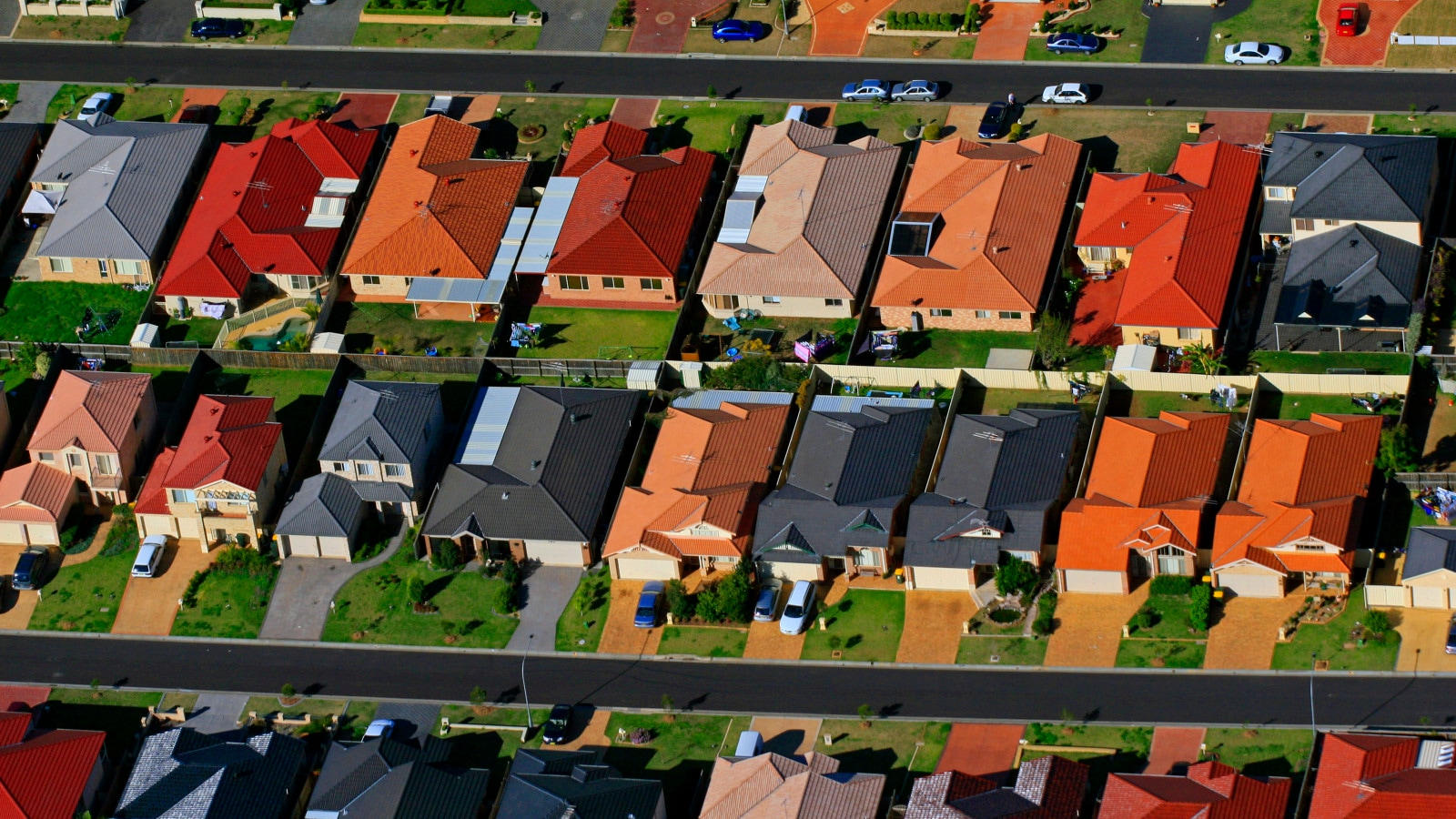{{item.title}}
{{item.text}}

{{item.title}}
{{item.text}}
The Swiss real estate market continues to be characterised by upheavals resulting from geopolitical and global economic events. Compared with the previous quarter, however, there are signs that things are returning to normal in some areas. The effects of supply shortages and rising commodity prices caused by the ongoing zero-Covid policy in China and the Ukraine war appear to have passed their peak. The buoyant growth of the Western economies that began after the end of the coronavirus pandemic may have levelled off, but it is currently still defying the new challenges posed by jumps in inflation and interest rate hikes. The Swiss economy continues to be characterised by labour shortages and low unemployment coupled with high net immigration. These opposing developments unfolded different effects. While the market values for residential property prices continued to rise compared to the previous quarter, the market values of multi-family houses and office properties suffered a damper.
The economic environment did not hint at any positive development, especially in the first half of the year. The effects of the coronavirus crisis abated, but were immediately replaced by the Ukraine war and the subsequent energy crisis. The heavy sanctions against Russia and the ongoing zero-Covid policy in China also caused severe distortions in supply chains1. Rapidly rising commodity prices and the associated energy prices were among the factors causing the wave of inflation that some market observers had been expecting for several years, given the unprecedented phase of extremely loose monetary policy since the financial crisis, especially during the coronavirus pandemic.
While inflation remains high abroad, the situation in Switzerland is once again proving robust. With a figure of 3.5% in the second quarter, inflation has peaked for the time being. The SNB forecasts inflation of 3% and 2.4% for 2022 and 2023 respectively. According to the SNB, inflation is expected to be 1.7% in 2024 – thus returning to the target range of 0–2%2[11]. Experts predict GDP growth of 2.2% this year, while growth of only 0.7% is expected in 2023 [8]. In the euro zone, GDP is expected to grow by 2.9% and 0.2% in 2022 and 2023 respectively, with inflation of 8.2% and 5.4% forecast. In the USA, experts predict economic growth of 1.7% and 0.5% for 2022 and 2023 respectively, with corresponding inflation figures of 8.0% and 3.8%3[73].
The production cost index in the last quarter showed strong signs of a reversal in the trend for massive price increases of the past three quarters. In the last quarter, the stone and concrete construction sectors for multi-family units (–2.5%) and single-family homes (–2.8%) as well as for building and industrial construction (–5.8%) all showed price reductions. Over the last 12 months, however, these sectors have seen increases of +4.8%, +4.8% and +5.8% respectively [18]. The construction price index, which lags behind the production cost index, consistently shows large increases of 5.6% for office buildings and 4.9% for multi-family units in the third quarter. Year on year, construction costs rose by 8.7% and 8.1% respectively [19]. The forecasts for construction activity over the next few years predict a negative trend in investment volume in the current year (–2.1%), followed by increases of 0.7% and 1.4% in the next two years [16].
The development in residential rents is showing a slight downward trend compared with the previous quarter (–0.7%). Over the past 12 months, however, the index for residential rents is still up 1.3%, with the increase in apartments in old buildings (+2.4%) being stronger than for new build apartments (+0.4%). These changes follow on from the steady developments of the past five years, during which residential rents across Switzerland as a whole did not undergo any significant jumps4. Regionally, however, the indices have indicated varying trends. The Zurich region recorded no change compared with the previous quarter (year-on-year change: +3.0%), while a reduction in residential rents of –1.3% (+2.3%), –1.3% (+0.6%) and –1.4% (–3.2%) was observed in the regions of Lake Geneva, Mittelland and Basel respectively. Rents in eastern Switzerland likewise declined, by –0.9% (+1.6%). The Jura region recorded the largest reduction at –3.6% (–2.8%), whereas the Alpine region and southern Switzerland recorded an increase, at +1.3% (0.0%) and +3.3% (+1.6%) respectively [25].
The downward trend in vacant housing stock was further accentuated in the past quarter. The vacancy rate decreased from 1.54% to 1.31% during the first half of 2022. The reasons for this trend are the continued decline in construction activity, the rising demand associated with economic growth and persistently high net immigration5.
Construction activity in the rental housing sector passed its peak as long ago as 2018 and, as expected, has not been positively impacted by this year’s construction cost shock. Approximately 23,000 rental units were approved nationwide over the past 12 months, a 10-year record low6. This development is highly likely to lead to increased pressure on rental prices. A majority of market observers are forecasting an increasing rise in residential rents over the next 12 months [30].
In addition, the reference interest rate in the rental housing sector is expected to rise in the short to medium term due to the two-step increase in the policy rate from –0.75% to +0.50% in the course of this year. Forecasts regarding the timing of the increase varied, reflecting the dynamic global and national monetary policy pursued during the past quarter. In August, with a policy rate of –0.25%, Swiss Life expected a rise in the reference interest rate by mid-20247. However, this forecast has already been corrected to 2023 after another interest rate increase of 75 basis points in September has taken place8. Experts at ZKB expect the step from 1.25% to 1.50% as early as the first quarter of next year. Overall, a continual increase of 25 basis points per year is expected in each of the following five years9.
After the last three quarters showed a marked increase in office rents overall, these declined slightly by –0.3% in Switzerland as a whole in the last quarter [42]. However, there are significant regional differences. While the Lake Geneva region managed to continue its strong growth since the coronavirus crisis at +4.2% and annual growth of as much as +15.5%, the Zurich region recorded a –2.2% reduction in rents for office space and annual growth of +8.8%. Forecasts for Switzerland as a whole continue to show cautious expectations with regard to the development of office rents. A majority of respondents expect a reduction in office rents, although a slightly less negative attitude than in the previous four quarters can already be observed10[48]. However, market observers also expect demand for office space to rise, especially in prime locations in the centres of major cities. It is becoming apparent that the discrepancy between prime locations and the peripheral areas will become even more pronounced11.
An important indicator for the office space market is the situation on the labour market. The KOF employment indicator shows the recruitment tendencies of companies and has often proven to be a harbinger of labour market developments in the past12. After companies’ recruiting intentions and advertised positions reached their highest levels since data recording began in 1997, in the first and second quarters of 2022 respectively, the figures seem to have peaked for the time being. For example, unemployment is expected to rise slowly from +2.2% to +2.3% in 2023 [8], but will still be at a historically low level13.
Although demand for office space is expected to continue along an upward trend due to companies’ growth-hungry recruiting strategies, office construction activity appears to remain low. In 2021, building permits were issued for an investment volume of only 1.6bnCHF. This year, the volume is likely to come to around 1.8bnCHF – still well below the historical average since 1995 of around 2.2bnCHF14. This is likely to put pressure on rents for office space.
After the turnaround in yield expectations anticipated due to the turnaround in interest rates was observed in the second quarter, the minimum discount rates also increased in the third quarter. For multi-family units in prime locations, these have increased from 1.77% in the previous quarter to the current 1.86% (net, real) [34, 35] according to leading valuation firms. Partly due to the development in minimum discount rates, market values decreased by –1.9% compared to the previous quarter [27]. During the last 12 months, however, the rate of change in market values still stands at +1.5%. The total return for multi-family units in 2022 (YTD) was 6.7%. Compared with the previous year, this would correspond to a 1.2% increase in total return. The increased yield is exclusively due to the return from appreciation in value, which amounts to 3.8% in 2022 (YTD) (2021: 2.6%). The cash flow return in 2022 (YTD) is 2.9% (2021: 3.0%)15. At regional level, the Zurich region in particular shows strong growth with a total return of 8% for 2022 (YTD) (2021: 6.8%). The regions of Lake Geneva and Mittelland, with figures of 6.8% (2021: 4.9%) and 6.0% (2021: 4.6%) respectively also show high increases. More sluggish development can be seen in the regions of southern Switzerland at 3.7% (2021: 2.8%) and the Alpine region with 3.6% (2021: 3.4%).
In the commercial sector, office yields showed a strong performance in the last quarter. In the current year (YTD), the total return stands at 13.4% (2021: 6.7%). This comprises 3.6% (2021: 3.6%) cash flow and 9.7% (2021: 3.1%) return from appreciation in value. Market values have declined slightly by –1.3% in the third quarter of 2022. However, growth of 12.2% has been recorded over the last 12 months. Unsurprisingly, the economic drivers of the Lake Geneva region and Zurich come out on top with 16.5% (2021: 2.0%) and 14.8% (2021: 11.2%) respectively. Development in the Basel region has been weaker, at 6.2% in 2022 (YTD) (2021: 2.1%)16.
Unimpacted by developments on the real and money markets, mortgage volumes in Switzerland have risen steadily for another year. As per August 2022 the total volume of mortgage loans amounted to 1,135.3bn CHF, which was around 4% above last year’s figure [24]. In contrast to mortgage volumes, mortgage rates have been subject to strong momentum in the past quarter and rose significantly compared with the previous quarter as a result of the increase in the policy rate. The interest rate on a three-year fixed-rate mortgage rose from 1.82% to 2.46%. For five-year and ten-year fixed-rate mortgages, increases from 1.99% to 2.70% and from 2.40% to 3.08% respectively were recorded [23]. The SARON interest rate was also subject to a sharp increase, rising from –0.20% to 0.47% [21]. The SARON interest rate and fixed-rate mortgages are expected to rise slightly in the coming 12 months. However, developments are still likely to remain subject to downward as well as upward swings17.
Developments in the residential property market are showing an initial reaction to the increased financing costs. While the price index for single-family homes has risen by +5.5% over the past 12 months, it increased by only +1.5% compared with the previous quarter. A look at the developments in the various price segments enables more differentiated conclusions to be drawn. The lower end of the market showed the highest year-on-year change, at +6.2%. This was followed by the premium and mid-range segments, with figures of +5.8% and +4.6% respectively. Compared to the previous quarter, however, the price increase for properties in the premium segment (+2.3%) was significantly stronger than for properties in the mid-range (+1.0%) and low-price (+0.3%) segments [58]. Although price growth in the premium segment was also impacted, it is no surprise that the increased financing costs appear to have affected the mid-range and low-price segments to a greater extent. Experts expect significantly lower price dynamics in the coming quarters than in the quarters since the outbreak of the coronavirus pandemic, but without falling prices due to the very low supply. This is only likely to be the case if interest rates are higher in the long term and there is a decline in demand18[61].
In the owner-occupied apartment sector, the same dynamics as for single-family homes can be seen across all segments. While the year-on-year price increase was +8.1%, it was only +2.2% compared to the previous quarter. The development of the individual segments is as follows: In contrast to the single-family home segment, the premium segment in the owner-occupied apartment sector is also the top performer year on year (+8.8%). This is followed by the mid-range (+7.5%) and low-price (+7.4%) segments. Compared to the previous quarter, the biggest change can be seen in the low-price segment (+2.9%), followed by the premium (+2.6%) and mid-range (+1.6%) segments [64]. Yet again, forecasts for the coming quarters do not predict any fall in prices [67].
While price dynamics in the property market are only likely to fall in the short to medium term as the result of increased construction activity or reduced net immigration, Credit Suisse economists predict that, in the longer term, the passing of the baby boomer generation will have a noticeable easing effect. Between 2030 and 2045, this is expected to free up an estimated 420,000 single-family homes or owner-occupied apartments for succeeding generations. Towards the end of this period in particular, up to 50,000 units per year are expected to come onto the market in addition to new builds. In the current year, when it is estimated that around 20,000 [62] transactions will be processed in the single-family home sector and around 30,000 [68] in the owner-occupied apartment sector, this would just about keep pace with the expected transaction volume19.
1 Immobilien Business, Starke Büromärkte / Oktober 2022
2 SNB, Monetary policy assessment / September 2022
3 Swiss Life Asset Managers, Perspektiven Konjunktur / Oktober 2022
4 FPRE, Marktmieten- und Baulandindizes von Renditeimmobilien Schweiz (Datenstand: 30.09.2022)
5 Credit Suisse, Resilienter Immobilienmarkt / September 2022
6 Credit Suisse, Resilienter Immobilienmarkt / September 2022
7 Swiss Life Asset Managers, Real Estate House View / August 2022
8 Swiss Life Asset Managers, Real Assets Exposé / November 2022
9 ZKB, Prognosen / Oktober 2022
10 FPRE, Marktmieten- und Baulandindizes von Renditeimmobilien (Datenstand: 30.09.2022)
11 Swiss Life Asset Managers, Real Estate House View / August 2022
12 KOF, Beschäftigungsfaktor / November 2022
13 KOF, Energiekrise belastet die Wirtschaft / Oktober 2022
14 Credit Suisse, Resilienter Immobilienmarkt / September 2022
15 FPRE, Marktindizes für Renditeimmobilien (Datenstand: 30.09.2022)
16 FPRE, Marktindizes für Renditeimmobilien (Datenstand: 30.09.2022)
17 Credit Suisse, Resilienter Immobilienmarkt/ September 2022
18 Credit Suisse, Resilienter Immobilienmarkt/ September 2022
19 Credit Suisse, Resilienter Immobilienmarkt/ September 2022

Sebastian Zollinger
Director, Head Real Estate Advisory, PwC Switzerland
Tel.: +41 58 792 28 87


